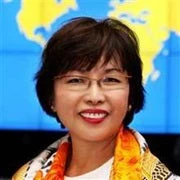International Women’s Day is a good day to remind ourselves that gender equality is indeed smart economics. As the global economy continues to struggle to regain its footing after a severe economic slump, it is increasingly apparent that the power of women must be harnessed—and it must happen now.
Much progress has been made over the past decade towards achieving gender equality, especially in education. Today, boys and girls around the world participate much more equally in primary and secondary education. At the tertiary level, a clear gender gap is emerging—and it’s one that favors women. Countries where girls have overcome the barriers to basic education lead the participation rates in tertiary education.
The World Bank recently published reports on skills and jobs in various world regions. The reports conclude that labor markets are increasingly demanding more and better skills from their workers - more than what education graduates seem to offer. This is especially apparent in many African countries where Enterprise Surveys applied twice between 2006 and 2010 reveal that more employers feel constrained by an inadequately trained workforce.
The role of women in this picture plays out in two ways. First, women continue to be less likely than men to join the labor force. Between 1980 and 2008, the average rate of female participation in the labor force increased from 50.2 to 51.8 percent while the male rate fell from 82.0 to 77.7 percent, but the gender difference certainly remains marked. Women still continue to earn significantly less than men despite having similar education qualifications and work experience.
Part of the “unexplained” gender differential in earnings is due to the fact that young men and women choose different fields of study, although one’s choice of study is itself determined by expected earnings differential. At the secondary level, girls are more likely than boys to choose general education and less likely to choose vocational education. As a result, young boys are more likely to find a job after graduation from secondary school. At the tertiary level, gender differences in areas of study are well known and are similar across poor and rich countries. Women are overrepresented in education and health; equally represented in social sciences, business, and law; and underrepresented in engineering, manufacturing, construction, and science.
Some say that the future shift in the type of skills demanded by the global economy, from routine cognitive and routine manual skills to non-routine cognitive skills, will favor women who by then would have a clear upper hand with their higher education degrees. Perhaps. And perhaps the recognition of this potential future gain will encourage more young women in developing countries to complete secondary school, graduate, and proceed to higher education—despite the current earnings gap between men and women and despite pressures from society and family to drop out of secondary school and start a family.
Find out more about how gender equality is indeed smart economics through the following resources: The World Bank's World Development Report 2012, Gender Equality and Development , Getting To Equal: Promoting Gender Equality Through Human Development.
Also, check out our website: Gender Action Plan: Gender Equality as Smart Economics and learn more about our Global Colloquium in April, 2012: Getting to Equal in Education: Addressing Gender and Multiple Sources of Disadvantage to Achieve Learning.



Join the Conversation